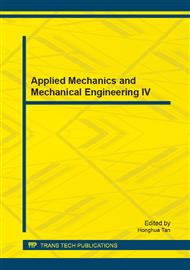p.641
p.646
p.650
p.658
p.664
p.669
p.674
p.680
p.686
Application Using Sugar Sediment to Enhance Mechanical Properties of Autoclaved Aerated Concrete
Abstract:
The effect of fine sand replacement by the sugar sediment (0, 10, 15, 20, 25, 30, 35, 40, 45 and 50 weight %) on the physical and mechanical properties was studied in this work. The physical and mechanical properties of AAC with various contents of sugar sediment were focused on the density, the humidity, the water absorption, the open porosity volume, the compressive strength and the flexural strength. The average density, humidity, water absorption, volume of open porosity, compressive strength and flexural strength of all compositions had the value in the range of 0.57-0.61 g/cm3, 23.0-26.7 %, 0.38-0.40 g/cm3, 259-287 cm3, 4.4-5.9 N/mm2 and 1.03-1.82 N/mm2, respectively. The maximum compressive strength and flexural strength were found from the AAC sample with the sugar sediment content of 30%, which were 5.9 N/mm2 and 18.14 N/mm2. Moreover, these samples also exhibited the density (0.60 g/cm3), the humidity (23.6%), the water absorption (0.39 g/cm3) and the volume of open porosity (272 cm3) were claimed in quality class of 4. The specimens of AAC with the sugar sediment content of 0-40% were claimed in quality class of 4, which based on the Thai Industrial Standard 1505-1998.
Info:
Periodical:
Pages:
664-668
Citation:
Online since:
October 2013
Authors:
Price:
Сopyright:
© 2014 Trans Tech Publications Ltd. All Rights Reserved
Share:
Citation:


